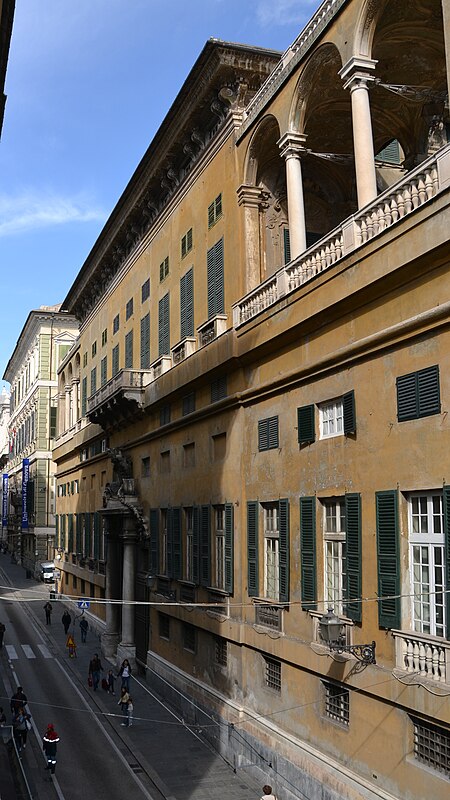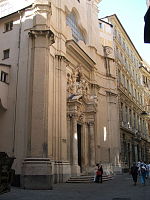Palazzo Durazzo-Pallavicini
Baroque palaces in ItalyBuildings and structures in Genoa

Palazzo Durazzo-Pallavicini or Palazzo di Gio Agostino Balbi is a building on Via Balbi in the historic city centre of Genoa. On 13 July 2006 it became one of 42 palazzi included in the new Palazzi dei Rolli World Heritage Site.
Excerpt from the Wikipedia article Palazzo Durazzo-Pallavicini (License: CC BY-SA 3.0, Authors, Images).Palazzo Durazzo-Pallavicini
Via Balbi, Genoa Prè
Geographical coordinates (GPS) Address External links Nearby Places Show on map
Geographical coordinates (GPS)
| Latitude | Longitude |
|---|---|
| N 44.4146 ° | E 8.9273 ° |
Address
Palazzo G. Agostino Balbi
Via Balbi
16100 Genoa, Prè
Liguria, Italy
Open on Google Maps











